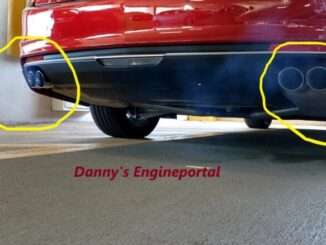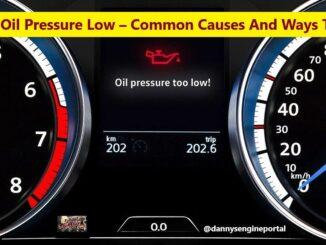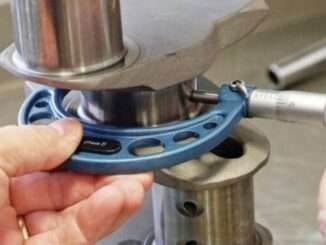
An oil pan gasket leak is something no one wants. But, oil pan leaks are probably the most common leaks.
So, it is not uncommon, for the gasket to wear out and start leaking oil.
Therefore, if you see drops of engine oil under the car, it may be due to, a faulty oil pan gasket. Consequently, engine oil, is like blood to your engine. So, you don’t want any leaks or complete failure, could be right around the corner.
Stopping oil pan gasket leaks, are a lot more important, than most people think.
And, that’s why, making sure that the oil level, stays at the right level, should be a top concern. But, there are many other factors to consider, that are responsible, for keeping the oil in the engine.
So, the oil pan gasket is one of the most important elements, in keeping your oil where it belongs. Consequently, engine oil pans, hold most of the oil in an engine, at a given time.
The material the gasket is made of, will begin to deteriorate over time, due to the high amount of heat. Eventually, the gasket will begin to leak and will create, drops of oil under the engine.
So, How Does A Oil Pan Gasket Leak Start
Like most parts of a vehicle, the oil pan gasket, does not last forever. As you continue to drive your vehicle the gasket will go through, wear and tear. Eventually, it will get to the point, where the gasket will not be able to, seal the oil any longer.
As a result, oil will begin to leak, as it circulates, between the engine block and the oil pan. That’s why, you need to recognize the symptoms of this issue, so that you can replace the gasket immediately. Otherwise, it could cause major damage to your engine.
Common Failure Symptoms:
Oil Leak
So, the biggest and most obvious symptom will be, oil leaking from underneath your engine. The material that the gasket is made of, will begin to deteriorate, due to the high amount of heat. Eventually, the oil pan gasket will begin to leak and will create, drops of oil under the engine.
Consequently, neglecting to fix this issue right away can lead to, a low oil level and pressure. That can be dangerous and compromise, the functionality of your engine.
Engine Overheating
So, if oil is leaking out, you will not have enough oil, to lubricate and cool down its parts. Consequently, the engine oil is part of, what keeps the engine cool. Along with the coolant, engine oil is used, to keep friction and heat down in the engine.
If the oil pan leaks and the oil level drops, it can cause the engine to overheat. An overheating engine, can cause extensive damage, if left unattended.
Smoke Issues
Another sign you will see when the oil pan gasket is leaking, is smoke coming from the engine. Due to, the oil from the oil pan, splashing on the hot exhaust manifold.
Letting this problem persist, may also lead to things like, the oxygen sensors or various other parts, becoming damaged.
Low Oil Level
In some cases, the leak that the oil pan gasket has, will be very small and nearly undetectable. Usually, for leaks like this the only warning sign that you will have, is a lower than normal oil level.
The engine warning light should light up on your dash, if you have a lower than normal oil level.
Oil Only Leaks, While The Engine Is Running
So, fixing an oil pan gasket leak, can be a frustrating ordeal. Your oil pan is always going to be, the lowest part on your engine. So, as oil is pumped all through your engine, it drains by gravity, back to the oil pan. Gravity always takes liquids, to the lowest possible place and that is where your oil pan sits. The oil pan catches and holds, all the oil in your engine, whether it is running or not.
Consequently, the level at which the oil sits in your oil pan is actually, below the gasket. This turns out to be a good thing, if you have an oil pan gasket leak. So, once you turn your vehicle off, the oil settles below the gasket, and the leak will stop.
But, this also can make it difficult, to identify an oil pan gasket leak. Because, the only time oil is leaking from the oil pan, is while you are driving.
How To Diagnose And Confirm The Leak
Always, start off with a visual inspection of the:
- Oil Fill Cap
- Oil Filter
- Pan Drain Plug
- Oil Pressure Sensor
- Valve Cover
- Front Crankshaft Main Seal
- Timing Cover Gasket
- Rear Crankshaft Seal
- Engine Oil Cooler Adapter
- Oil Level Sender
- Oil Pan
- Intake Manifold
- Head Gasket
- Distributor
Thoroughly Clean, All The Oil From Your Engine, Using Brake Clean Or A Engine Degreaser
An oil pan gasket leak, can be difficult to identify. So, it is worth making sure, that your oil pan gasket is actually, where the leak is coming from. There can be evidence of a leak down, to your oil pan gasket, on the outside of your engine.
Just because you have oil around your oil pan, doesn’t mean, your oil pan gasket is leaking. While checking your engine, make sure to check for evidence of a leak and oil residue, above your oil pan. If you find oil above it, it may just be leaking down, from another leak source.
Using A Smoke Machine
Smoke technology is a quick simple solution, for troubleshooting leaks, in most any closed automotive system. In fact, finding leaks with a smoke machine, is as simple as looking for smoke, exiting the engine. And, most all automakers agree, a smoke machine is the fastest, easiest and safest way to find leaks.
Using A Fluorescent Leak Dye Detection System
Also, the combination of an ultraviolet (UV) light and fluorescent dyes, also allows you to find small oil leaks.
Add the dye to your oil and let your engine, idle for 10 minutes. With the overhead lights off, shine the fluorescent light, over your engine. As a result, glowing areas will show leaks.
Find Leaks By Applying Air Pressure, The Soapy Water Test. (The same way we used to find leaks in tires)
Another way to find leaks is, to pressurize the intake manifold, with about three lbs. of regulated air. This can be done by, attaching a regulator to your shop air hose. Next, attach the hose, to a vacuum fitting or the (PCV) valve fitting, on the intake manifold. But, do not apply too much pressure or, you may create new leaks!
Next, with the engine off and air flowing into the manifold, spray soapy water on suspected oil pan gasket leak.
Finally, if you see bubbles, you have found the leak.
In Summary: Oil Pan Gasket Leak
An oil leak, can be a serious issue with a vehicle. So, being aware of the signs of a leak, is an important step, in preventing catastrophic engine damage. As oil leaks out and the levels become dangerously low, the engine loses necessary lubrication. And, that can lead to expensive repairs. Finally, there are several ways to easily determine, if your engine has that dreaded leak, without breaking the bank.
Your oil deteriorates as it ages, producing sludge and other corrosive substances. In addition, dirt, abrasive particles, metal fragments and byproducts of combustion, accumulate in your oil over time. If your oil isn’t changed, these items can cause, wear on oil pan gaskets and seals, causing them to fail and leak.
So, again proper maintenance, is always at the top of the list, for keeping you on the road.
Thank You !!




